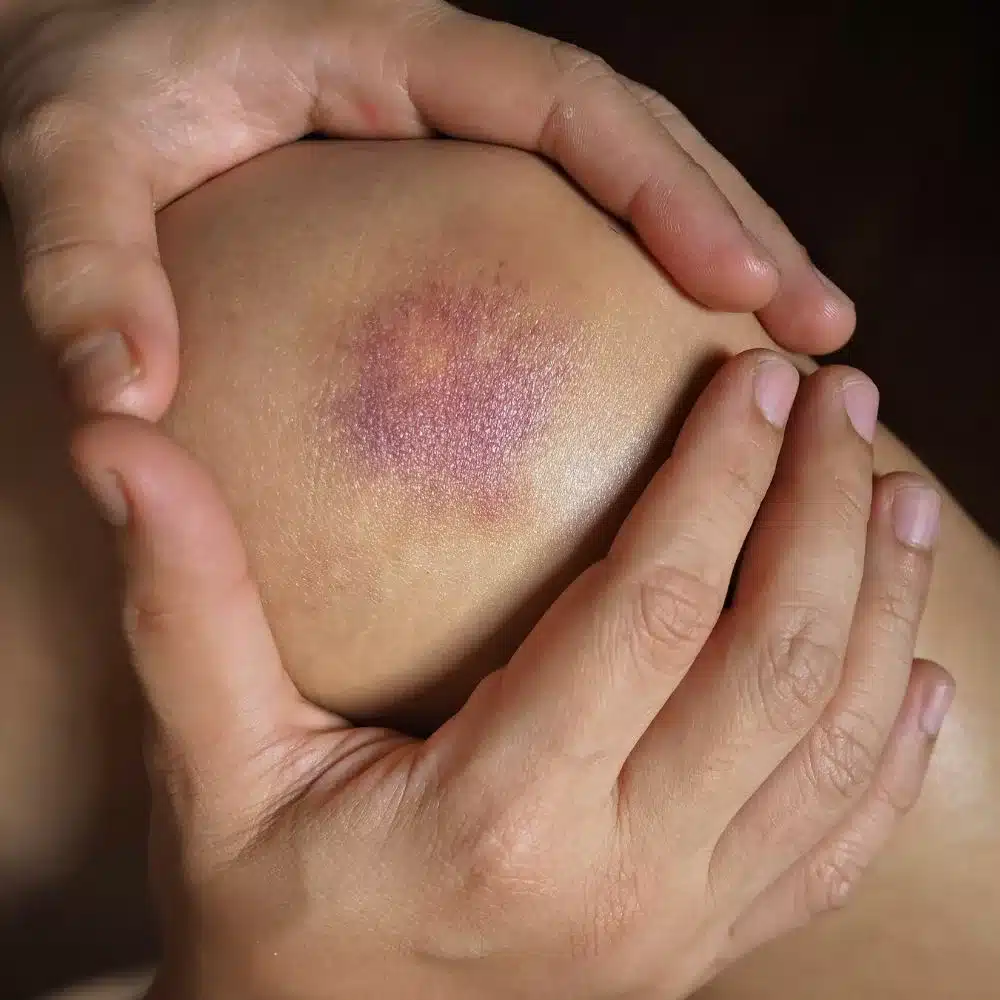The HOC nursing team often hears from patients struggling to tell the difference between a bruise and a bleed that might require treatment. It’s true that people without bleeding disorders can bruise easily and have raised, painful bruises. So, when should you be concerned as a patient?
Whenever you notice a bruise, it is important to assess it.
1) What color is it? (Red, Purple, Yellow, Etc.)
2) Is it flat or raised?
3) Is it warm/hot to the touch or does it feel the same as the rest of your skin?
4) Is it painful?
5) Is there swelling around the bruise under the skin?
6) Can you move the body part where the bruise is located without difficulty (Example: straighten or bend a bruised knee)?
7) Do you have any numbness or tingling below the swelling and bruise (Example: numbness or tingling in your toes with a bruised ankle)?
Most bruises can be safely monitored at home and do not require treatment, even bruises that are somewhat raised. Bruising may slightly spread over a couple of days, but should not be significantly increasing in size. Bruises on joints, such as knees, should be monitored closely for changes. Many soft tissue bleeds will heal without medication intervention.
When bruises begin turning yellow or green, they are usually starting to heal. If you notice a knot under your skin, you can begin using heat and massage to help the knot reabsorb faster. These knots can still be painful.
So, when should you worry about a bruise?
– Bruises that are raised with surrounding swelling to the area
– Bruises that are warm/hot to the touch
– Bruises that accompany decreased movement
– ANY numbness or tingling- Call HOC immediately- this is a sign of compressed nerves and can lead to serious injury
Any time you are concerned about a bruise, call HOC. Your nursing team is ready to help you determine if you might require intervention. It can be difficult to watch and wait with some bruises, but sometimes that is the treatment that’s correct!




